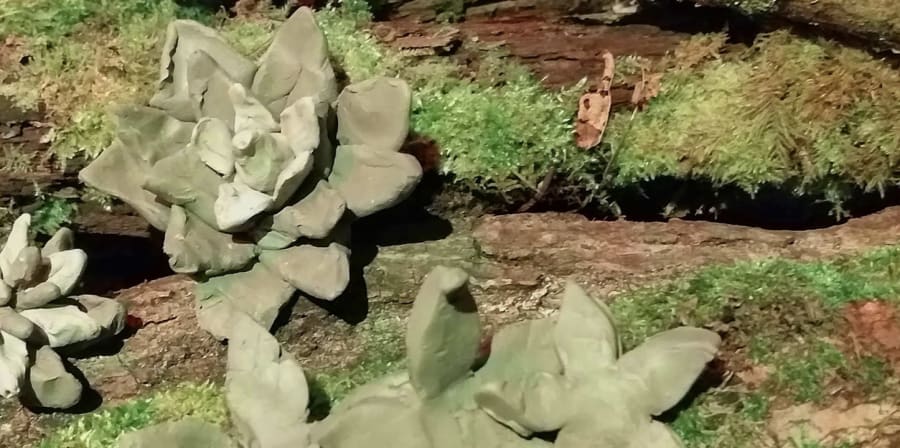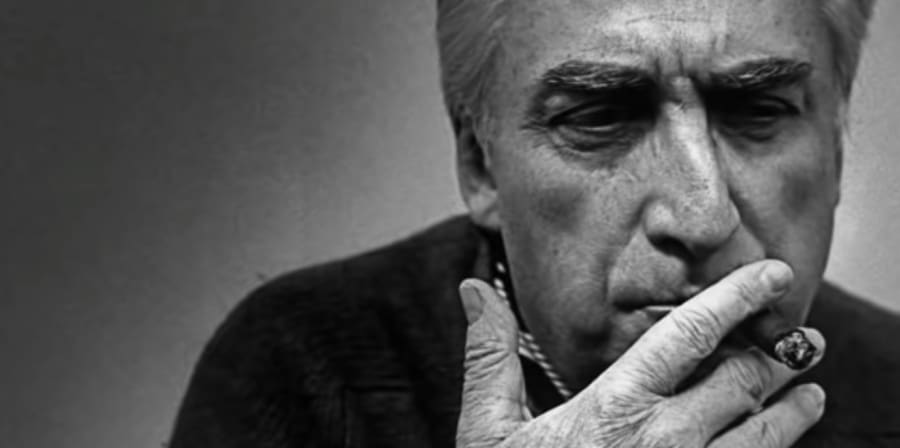Article by Philippa Kate Weaver (MFA Fine Art, Wimbledon College of Arts), currently artist in residentce at the National Trust's Leith Hill Place this spring.
When an artist does not make their own work, what does it mean for the nature of art, and for the status of the artist?
The Cave Garden, part of a residency for the National Trust, is an experiment in collaborative making with the general public. It is a test in the art of not making: the artist makes nothing; random visitors are invited to be the artist.
The artist, Philippa Kate Weaver, has set up an atmospheric scene, provided materials and outline instructions that encourage visitors to make an object and place it on a plinth along with other contributions. The experiment is to go on for 3 months from 29 March to the 30 June 2019.
The artist will not intervene in the progress or influence the making during the 3 months except when participants break the rules. The rules are simple and are phrased as an invitation rather than as a directive:
"Today you are an artist. Choose a handful of clay - one colour or a few. Make a flower, or a symbol of a flower. Use just your hands or some of the tools provided. Place your creation on the wood-pile plinth."
Weaver is interested in the art of collaborative making and its impact on authorship and mental health. It would be difficult to think about authorship in art and not remember Duchamp and the idea of anti-art. Duchamp wanted to "de-deify the artist", remove the artist's god-like ego. Jean Arp also "challenged existing notions of art and experimented with spontaneous and irrational methods… relinquishing control… to depersonalise the creative process." It is this link with removing ego and personal control that brings Weaver to investigate mental health. If the art piece does not belong to any one person, if no one has control, then the pressure to be "the creator" is removed and the maker is freed from expectation. This freedom perhaps instils a more positive mental state. In short does collaborative making make people happy?

Michael Petry in his book "The Art of Not Making" investigates the current relationship between the artist and the artisan. He questions if an artist can claim ownership of an object if that object was collaboratively made and he looks at the line that is drawn between art and craft.
Petry begins his introductory essay with the comment that "there has been a return to a highly crafted aesthetic in art. The conceptualism that emerged in the mid 1960's - and the consequent "deskilling" of art education and "dematerialization" of practice - appear to have had its day." At Wimbledon College of Art (UAL) the students have witnessed a very real example of this change as Fine (conceptual) Art courses have been replaced with industry ready theatre and film options. The message is clear: the art education of today needs to train the student in the necessary craft to do a job.
It is also worth noting that the visual arts have radically changed and expended over the last few decades, now not only including the traditional painting and sculpture, but also the installation, the public space, the immersive multi-sensory experience and the multi-media spectacular. It would be fair to say that no one artist could become a skilled craftsperson or technician in all these options and so, if the artist has an idea, the artist's job becomes finding the people to bring the idea into being. But if the artist is (only) the producer / director, is the art still theirs to claim?
Petry uses the example of film to demonstrate this point. "In film there is no doubt where the authorship of a movie lies. The director may not have personally done the lighting, cinematography, sound, music, or editing, let alone the acting, but they still get credited as the person who "made" the film. People generally understand the collaborative process of making a movie, and the roles of those engaged in its production; and they understand that in saying that a film is "made" by this or that person, it does not discount the work of the many others involved." What Petry does not say is that at the end of a film every single person is credited with the work they have done whereas in art, almost always, it is just the artist that is credited. It is here maybe that change is required: the artist should be credited with the role of director / producer but the craftspeople and technicians should also be listed.

However, where does the accreditation end? Petry refers to Roland Barthes who wrote a highly influential essay in 1967 that famously "declared 'the death of the author' ". Barthes was concerned that the author's aims and background should not take any part in the understanding of a text because this would limit that text to just one interpretation and that would be damaging. He wrote that the meaning of a work should be multi-layered and depend on the reader(s) and should be " 'eternally written here and now' with every re-reading". If we extend this idea to the visual arts then every art work is re-made with every viewer. Barthes also commented on the lack of originality in the arts and that every thing is a re-hash of what has gone before. Again, how can one artist claim a work as their own, when it can only be a regurgitation of the past?
It can be claimed that art is entirely and always a collaborative process.
This collaboration includes:
- All the ideas and images of the past
- The artist's directorship
- The maker's skill
- The viewer's interpretation
Is it because it is a collaboration that art has the impact it does? This useless thing that we call art has been around for centuries and despite being useless it persists and we don't really understand why. Maybe it is because in making something collaboratively, we are happy.
And happy is a good thing.
Philippa Kate Weaver is resident at the National Trust's Leith Hill Place this spring and invites all visitors to the property to contribute to a collaborative sculpture. Philippa is also responding to one time mistress of the house, Caroline Wedgwood, with an exhibition of sculptures "Minding the Woman"
Find out more about Phillipa Kate Weaver's work on her website

